1. Product design
2. Systems design
3. Prototyping
2. Systems design
3. Prototyping
USER
Freeman, environmental designers, graphic designers, creative directors, new employees undergoing onboarding, and clients
TEAM
Sherry Huss, Christie Kim, Stephanie Bailey, Candace Carpentier
DURATION
2022
Freeman, environmental designers, graphic designers, creative directors, new employees undergoing onboarding, and clients
TEAM
Sherry Huss, Christie Kim, Stephanie Bailey, Candace Carpentier
DURATION
2022
Communication toolkit for a multi-disciplined event company
Project summary:
My career at Freeman as an experiential designer was my first peek into corporate and agency culture. I concentrated on creating live experiences in physical and digital spaces. To design a physical space for interaction, you need to understand scale and blend 3D design with graphics to make a truly immersive space. While graphics could be displayed on 3D renderings and shared with the team for feedback, I needed more time to prototype to tell a story in a physical space rapidly.
Inspired by the standardization of forms used in trade shows and toys, such as Tinkertoys, Legos, and other workshop tools, Tradeshow Trinkets aims to encourage play and rapid prototyping in an environment that requires fast turnarounds for design and production.
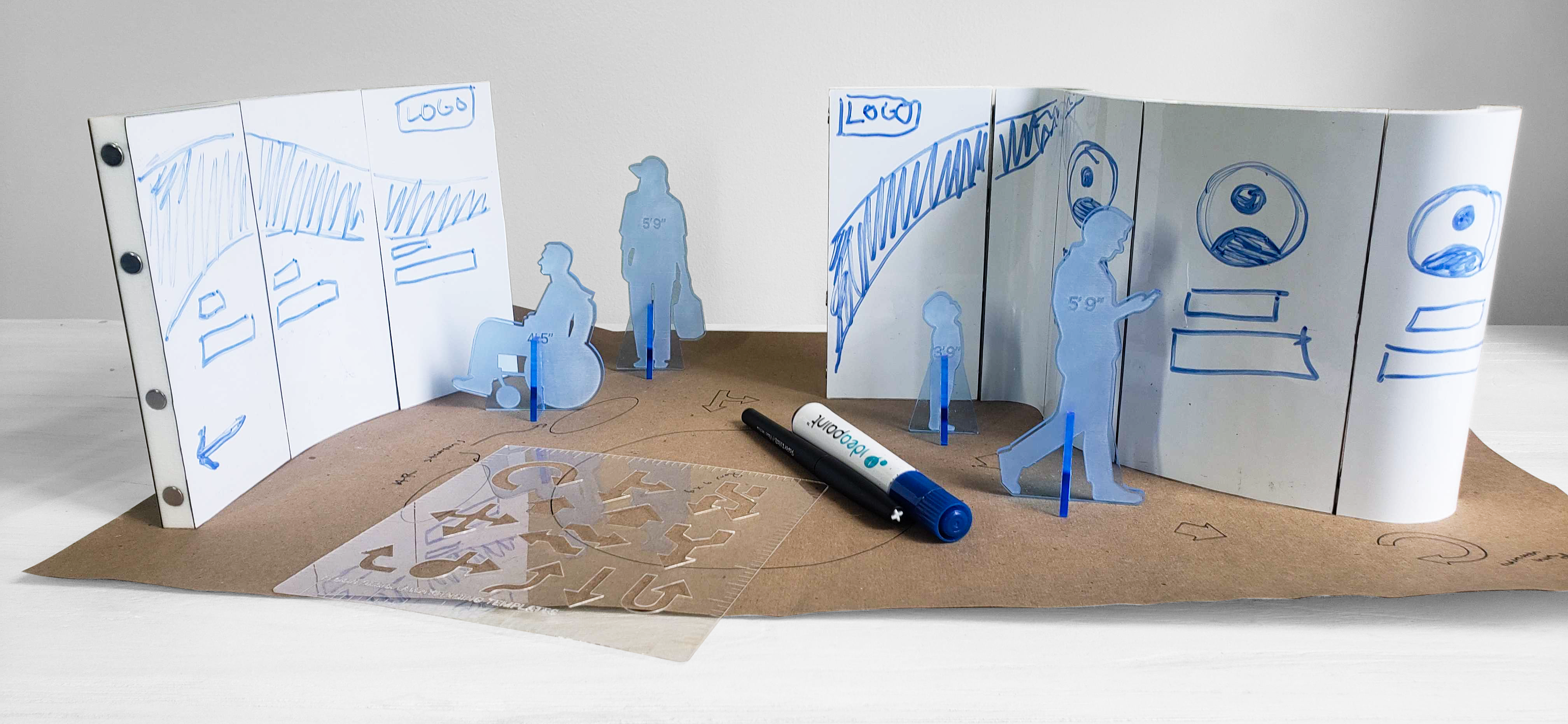
Role ︎
- Performed as Creative Lead and Lead Researcher
- Responsible for user interviews, concept development, testing, and packaging experimentation
Goals ︎
- Transform the agency experience and how multidisciplinary teams communicate with one another.
- Develop a rapid prototyping tool for onboarding employees and interns at Freeman.
Outcomes ︎
- Increase opportunities for experimentation and critique in a fast-paced design setting by 33%.
- Elevate the design culture in corporate environments to invest in design talent and build community.
- Save 12% of materials from being misused in designs and ending up in landfills.
(A) Research
Tasks
︎ Define problem spaces within the design process and any external stakeholders in tradeshow design and fabrication.
︎ Research personas that could utilize the project in at least one use case.
︎ Define the goals of each model of the product.
UNDERSTANDING
The current systems and the people in projects
The right shows the first sketches of understanding the process of how a typical mid-tier project goes from request to finished product and the main stakeholders in the process who are in charge of execution. Other moments of internal and external moments of critique are also mapped along as well to identify when ideas are shared for others’ opinion to change the outcome of the design.
![]()
The current systems and the people in projects
The right shows the first sketches of understanding the process of how a typical mid-tier project goes from request to finished product and the main stakeholders in the process who are in charge of execution. Other moments of internal and external moments of critique are also mapped along as well to identify when ideas are shared for others’ opinion to change the outcome of the design.
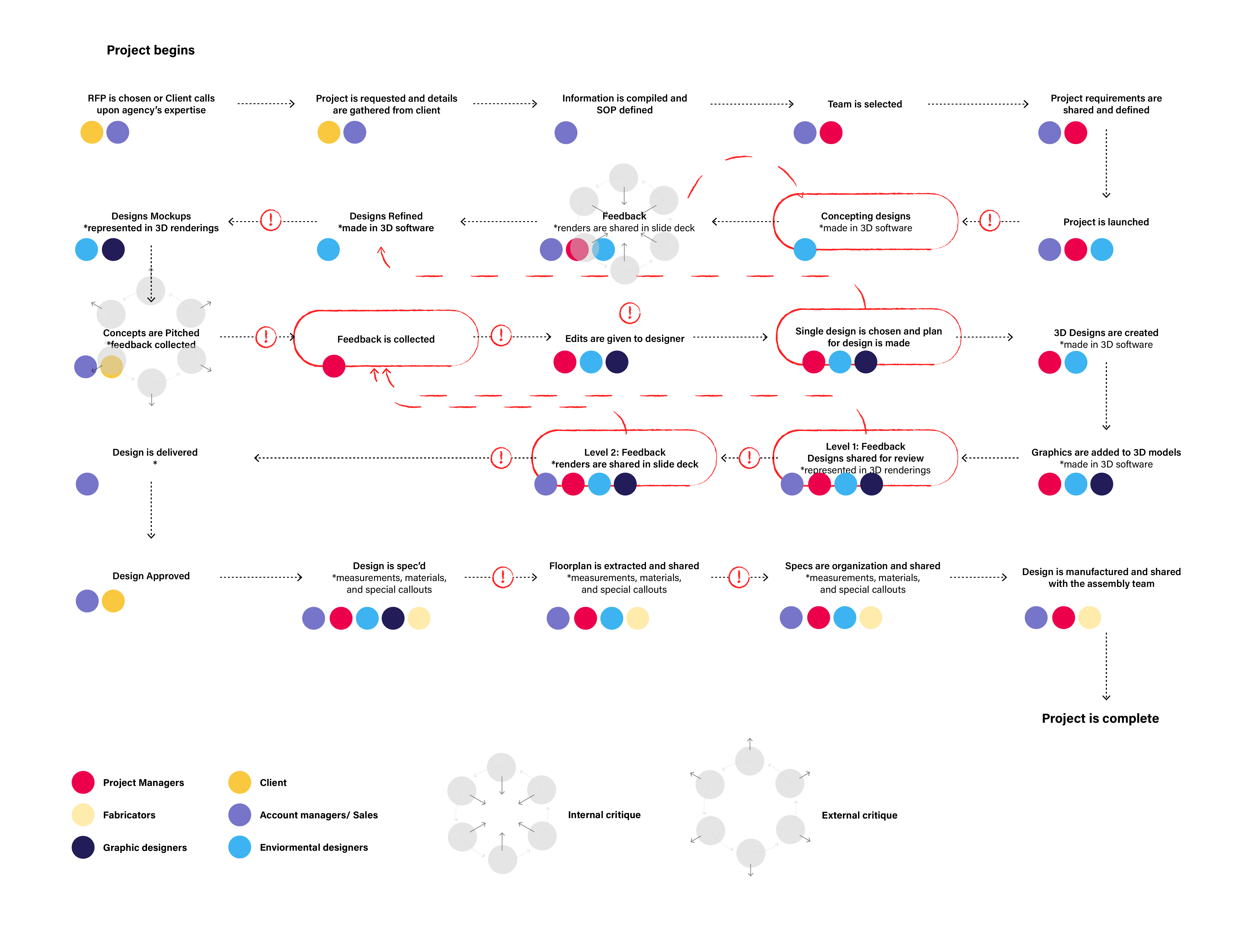
Guiding questions:
How can be encourage iterative, collaborative design work while still reaching timeline milestones?
How can be encourage iterative, collaborative design work while still reaching timeline milestones?
How can we develope a form language to expedite the design process and communicate ideas faster across multidisciplinary teams?

The event world is made up of squares and boxes.
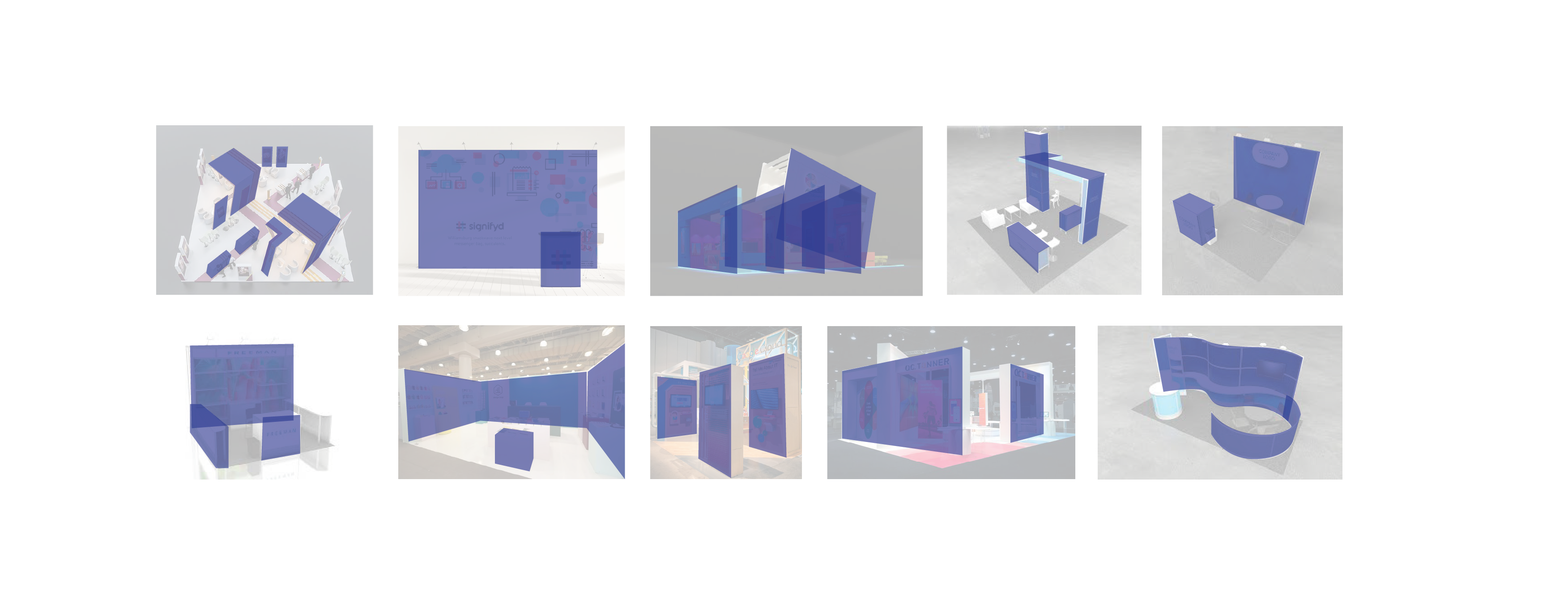
Inspiration for Kit
The design approach was inspired by designer Cas Holman, a toy designer and professor at the Rhode Island School of Design. Their approach of using toys as tools to pose open-ended questions and to investigate the world around them freely was the quality I wanted to bring to Tradeshow Trinkets. Not to create a toolkit that will tell you the answer, but to allow designers to converse with both the materials and the design challenges they are working through, and others around them.
Check out the 1-pager here ︎

One pager project brief + strategy
UNDERSTANDING
Key interviews

IDENTIFY
Ideal project workflow
The diagram above was to understand the process of how a typical mid-tier project goes from request to finished product and the main stakeholders in the process who are in charge of execution. Other moments of internal and external moments of critique are also mapped along as well to identify when ideas are shared for others’ opinion to change the outcome of the design.
The design process with Freeman Fidgets
Ideal project workflow
The diagram above was to understand the process of how a typical mid-tier project goes from request to finished product and the main stakeholders in the process who are in charge of execution. Other moments of internal and external moments of critique are also mapped along as well to identify when ideas are shared for others’ opinion to change the outcome of the design.
The design process with Freeman Fidgets

(B) Prototyping
This kit comprises 3D-printed, modular wall components with magnetic connections and dry-erase surfaces for sketching. In addition to further adding to the storytelling experience and more accurate modeling, there are laser-cut templates for floor wayfinding and scaled silhouettes of different heights to represent the variety of audience members and their accessibility needs.
Tasks
︎ Identify the pain points of users
︎ Develop user experience for contributors, mentors, and students
︎ Discover opportunities in the education/ learning resource market and implement a business strategy
PROTOTYPING
Identifying Core needs
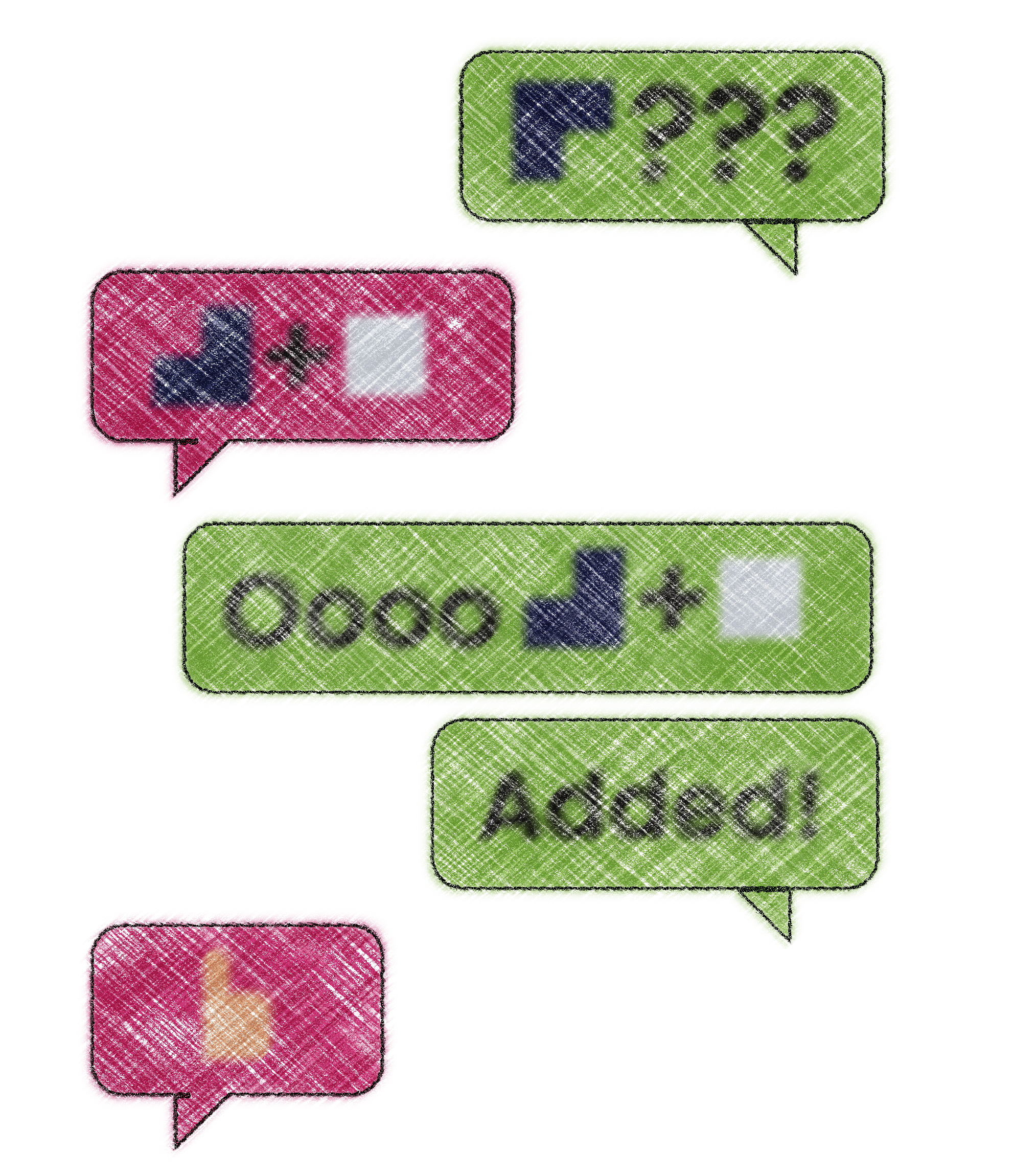
Clear
communication
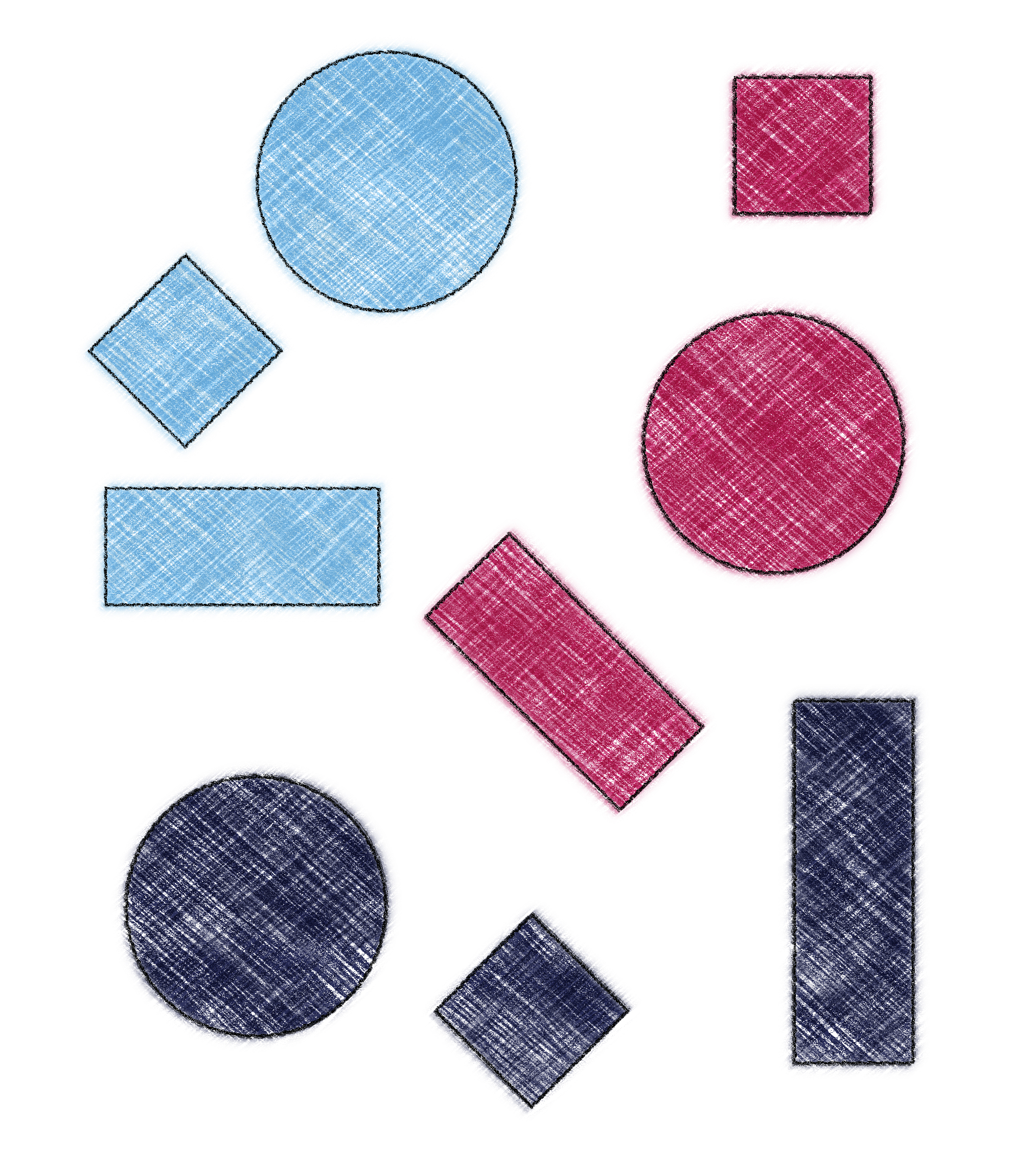
Multi-person collaboration
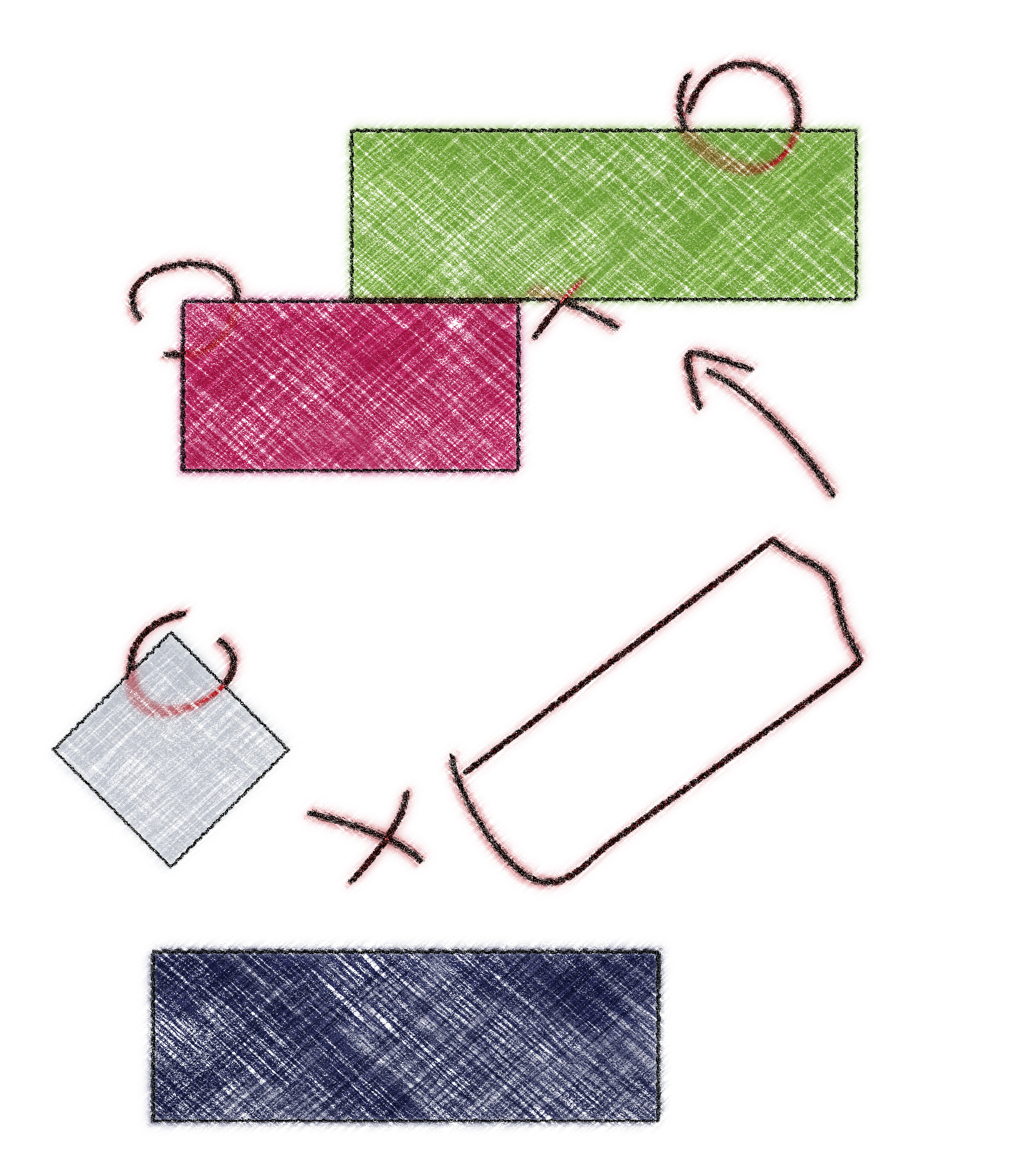
Fast iterations
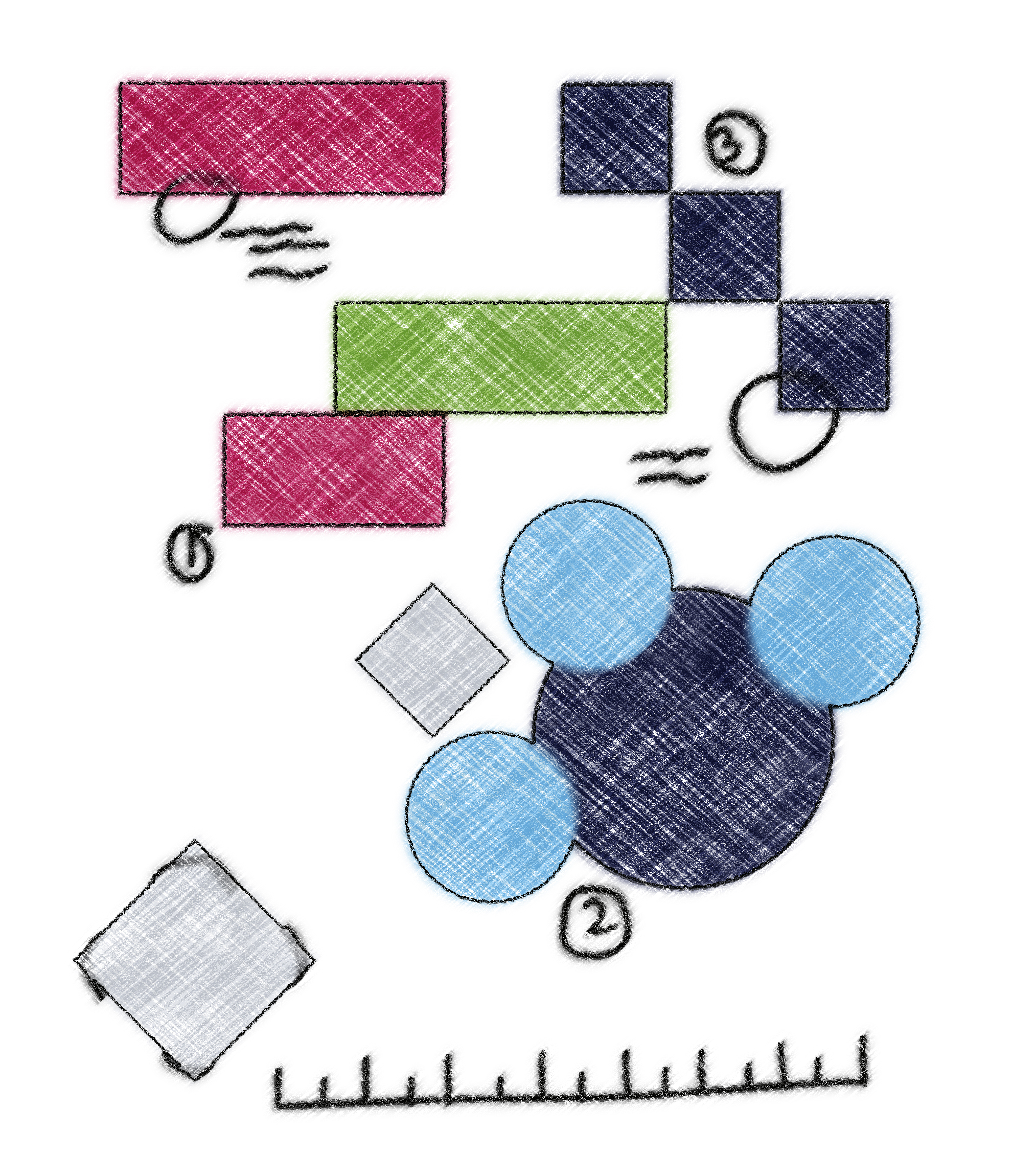
Rapid prototyping
PROTOTYPING
Prototype #1
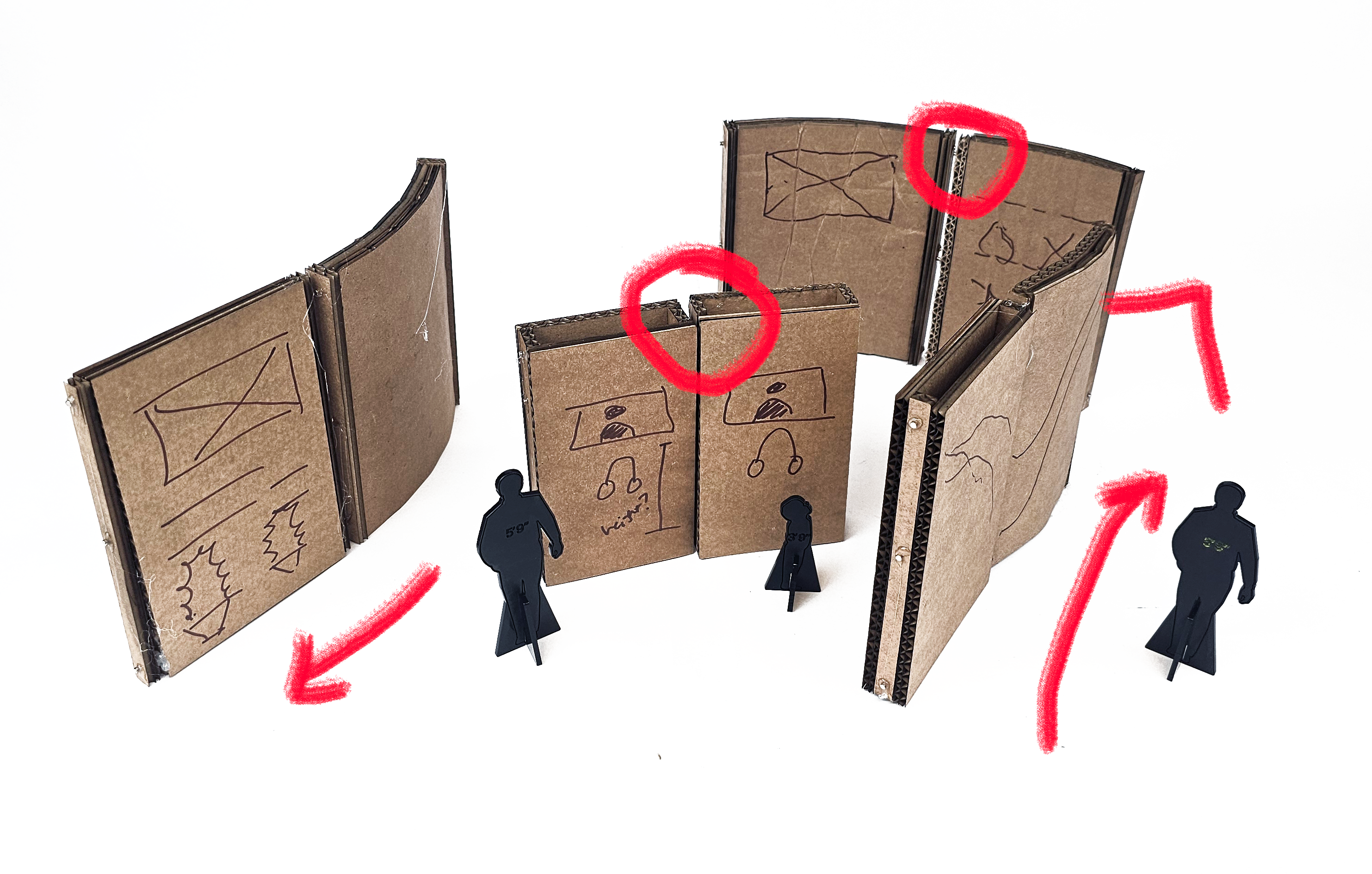

Findings

PROTOTYPING
Prototype #2
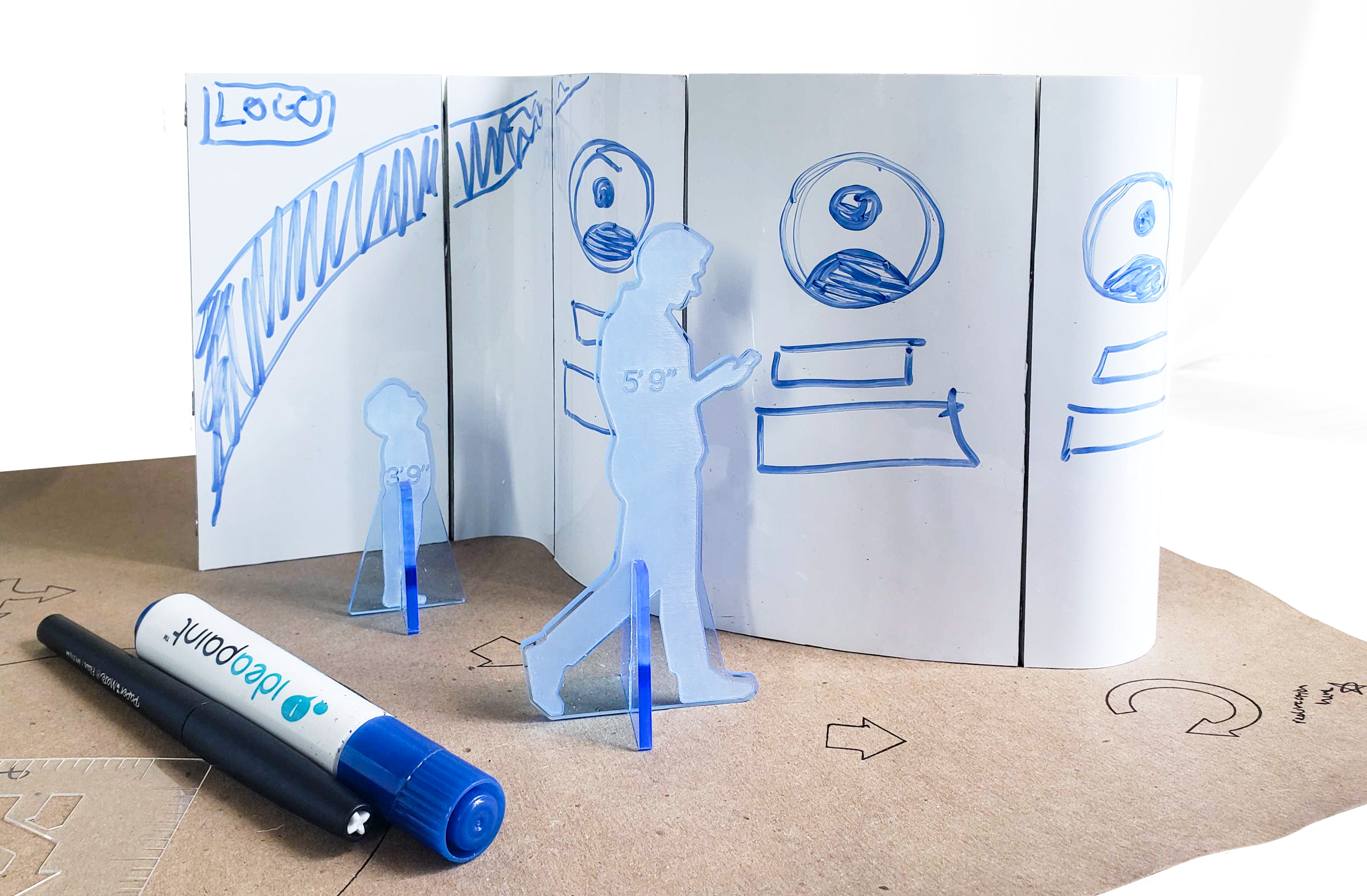
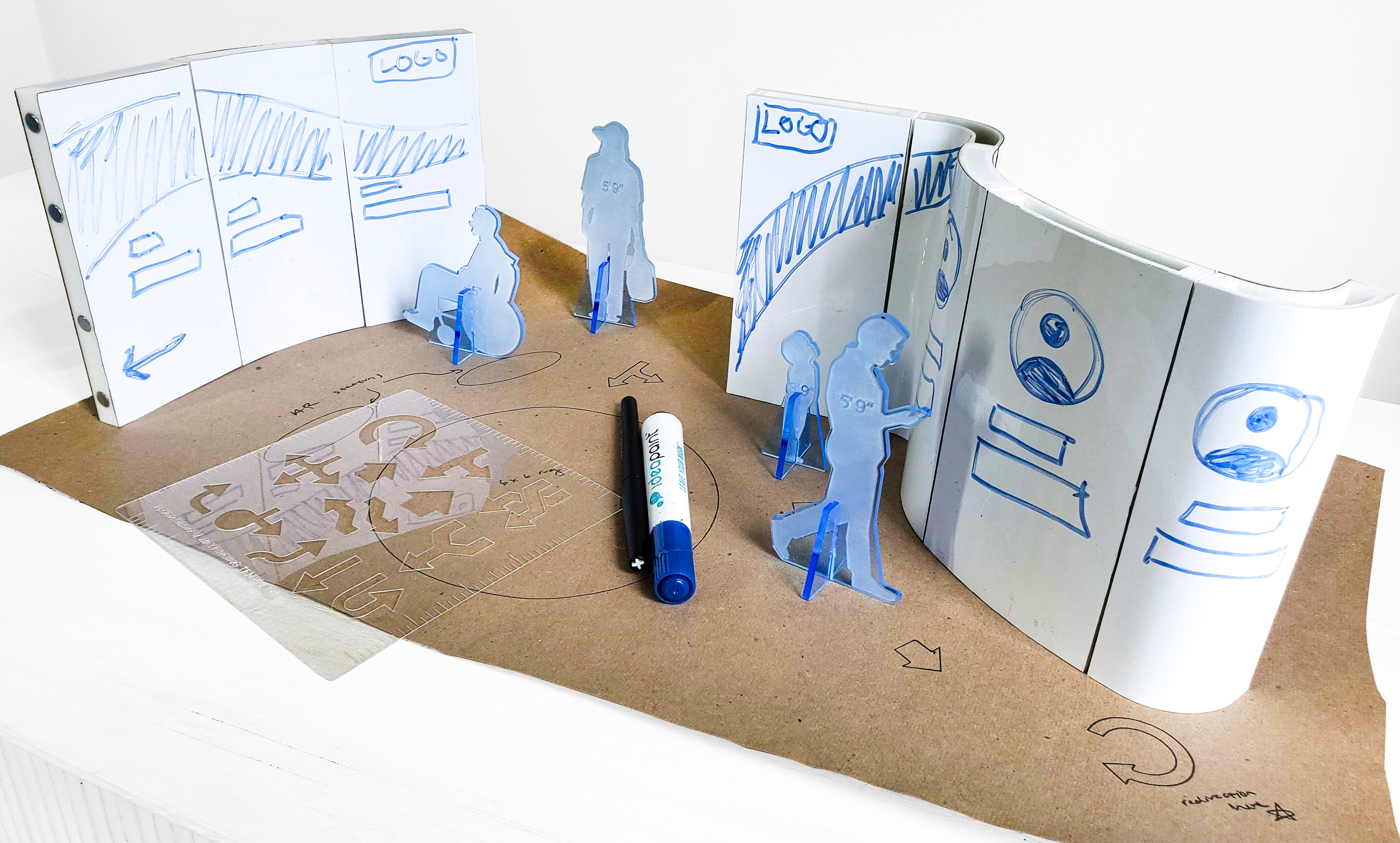
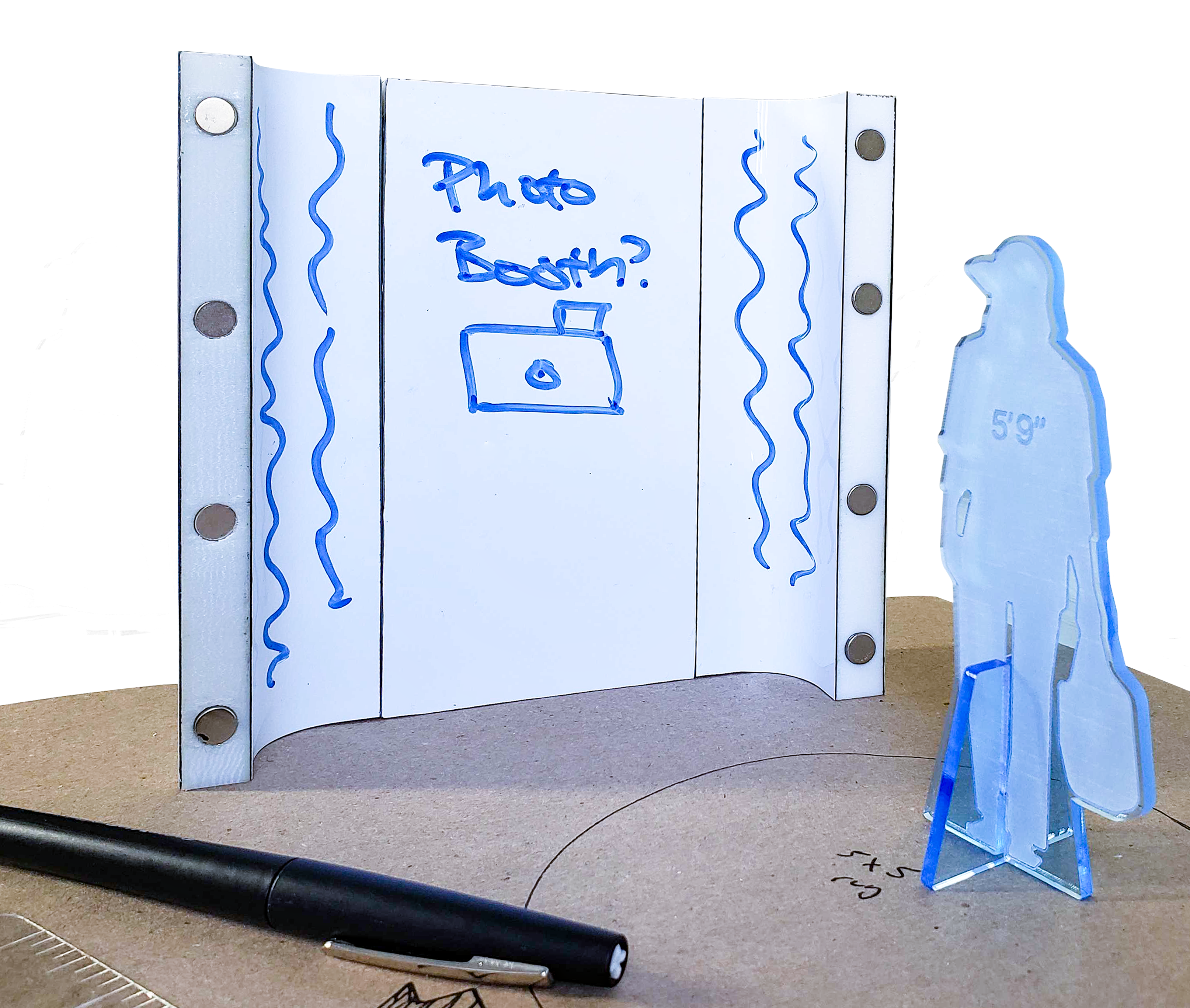
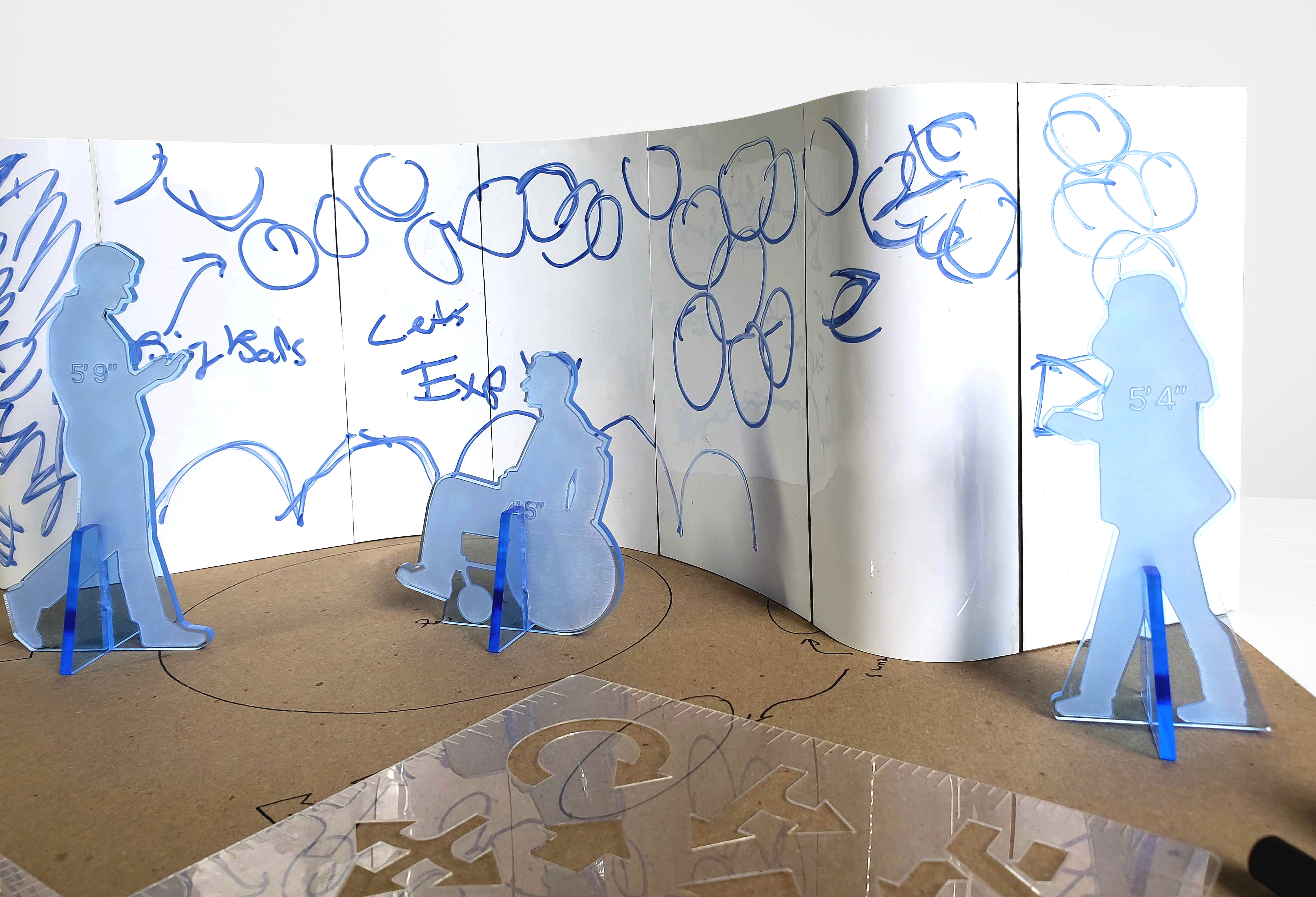
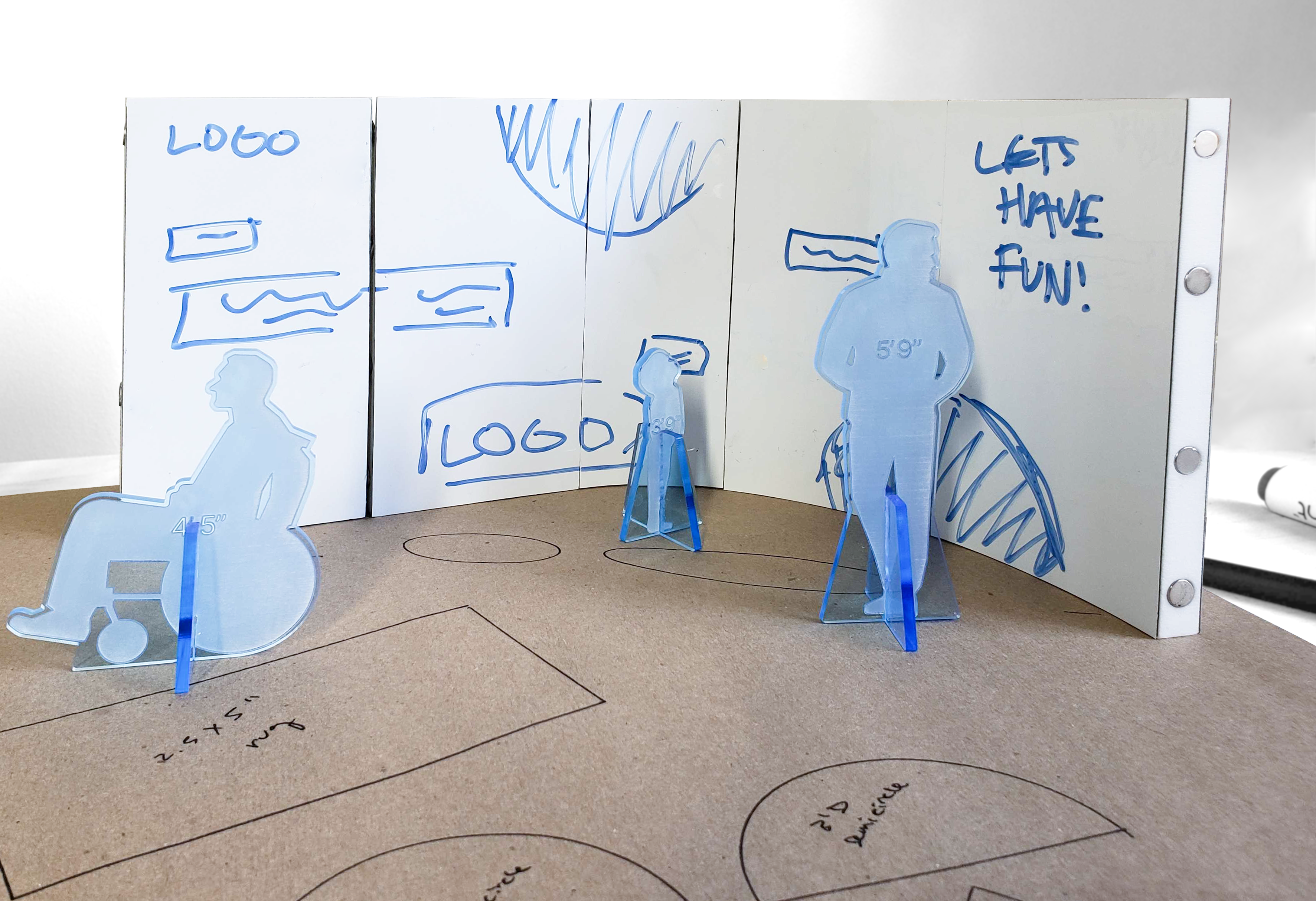
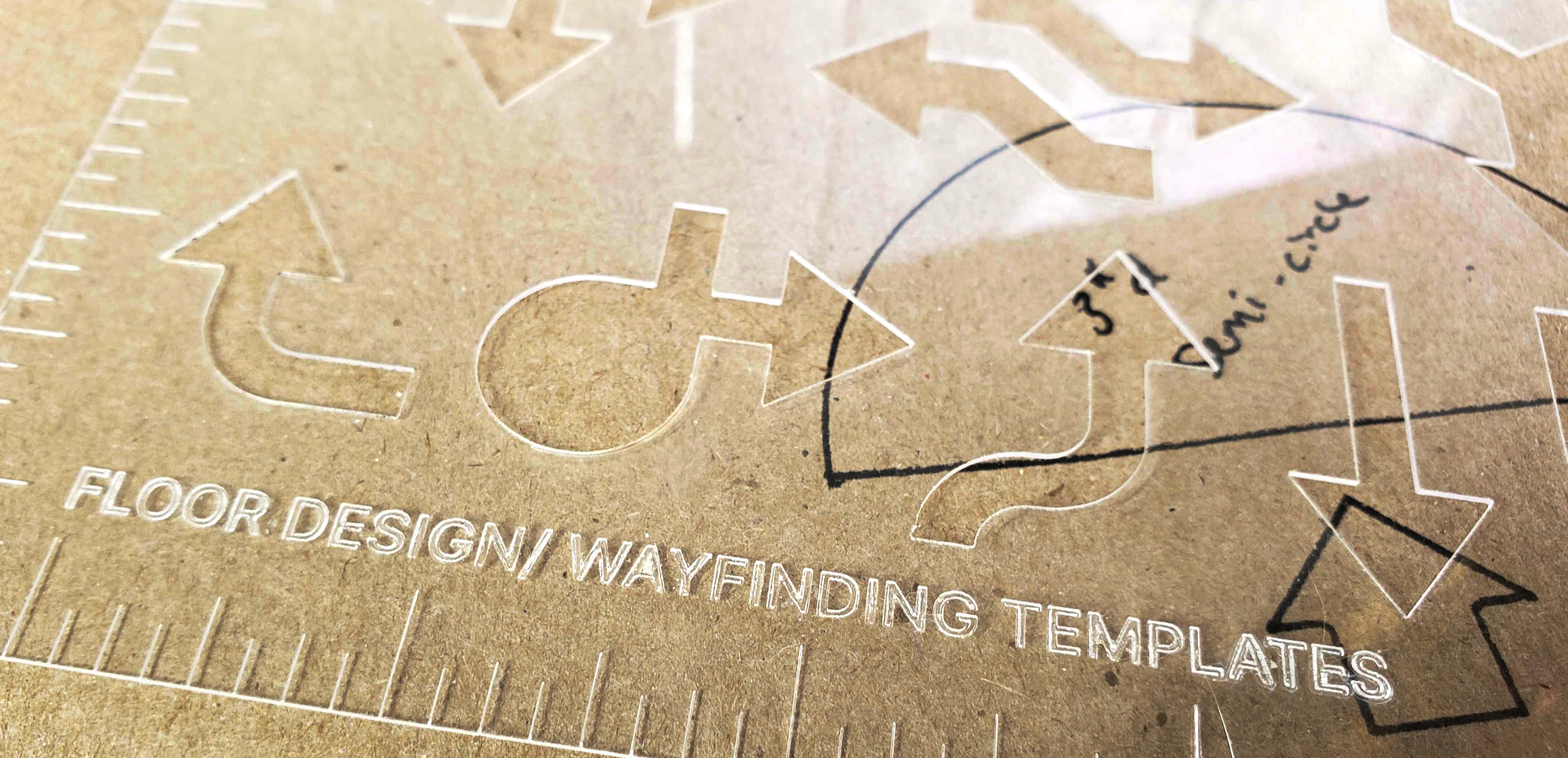
Features
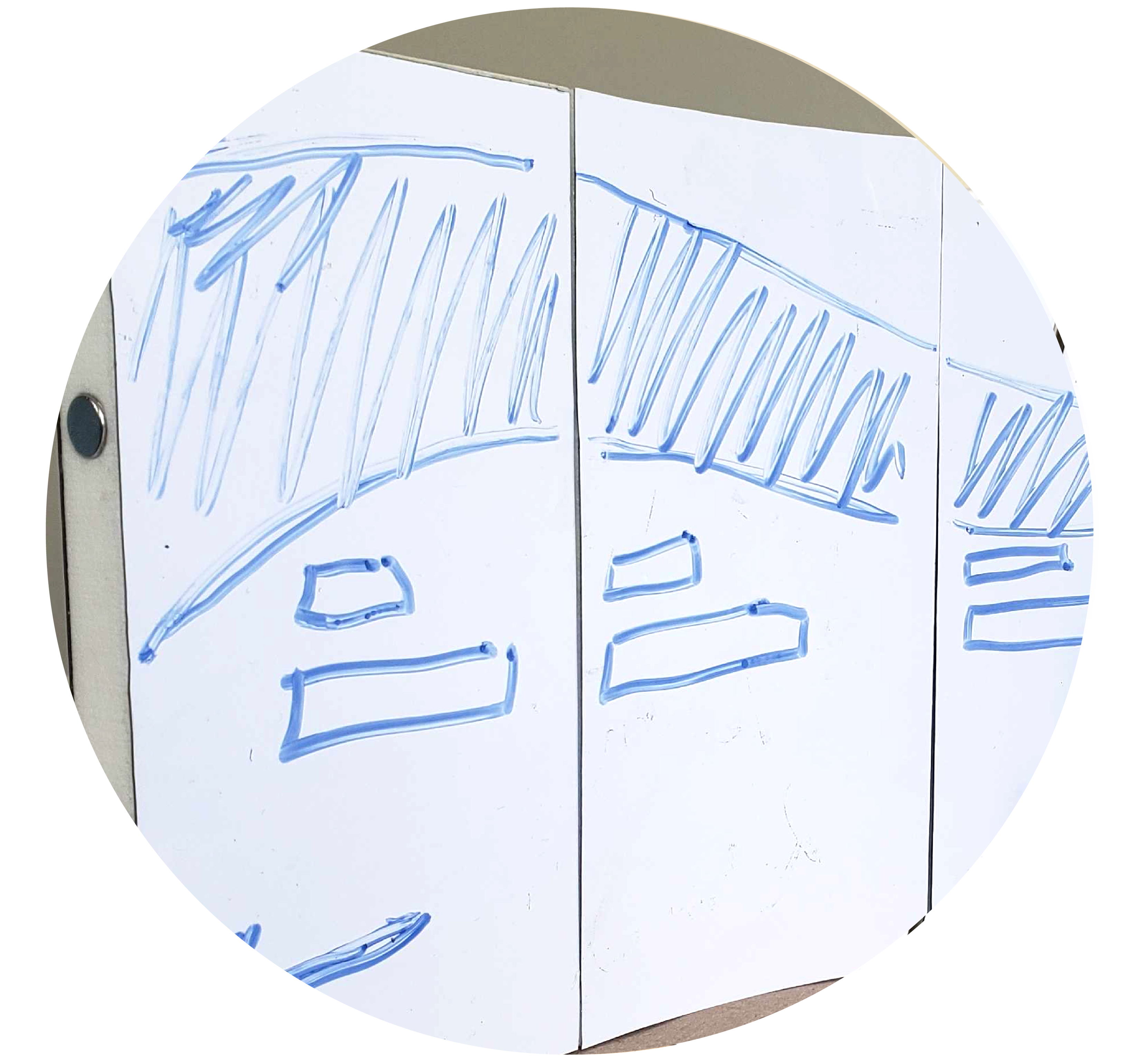 Dry-erase surfaces
Dry-erase surfaces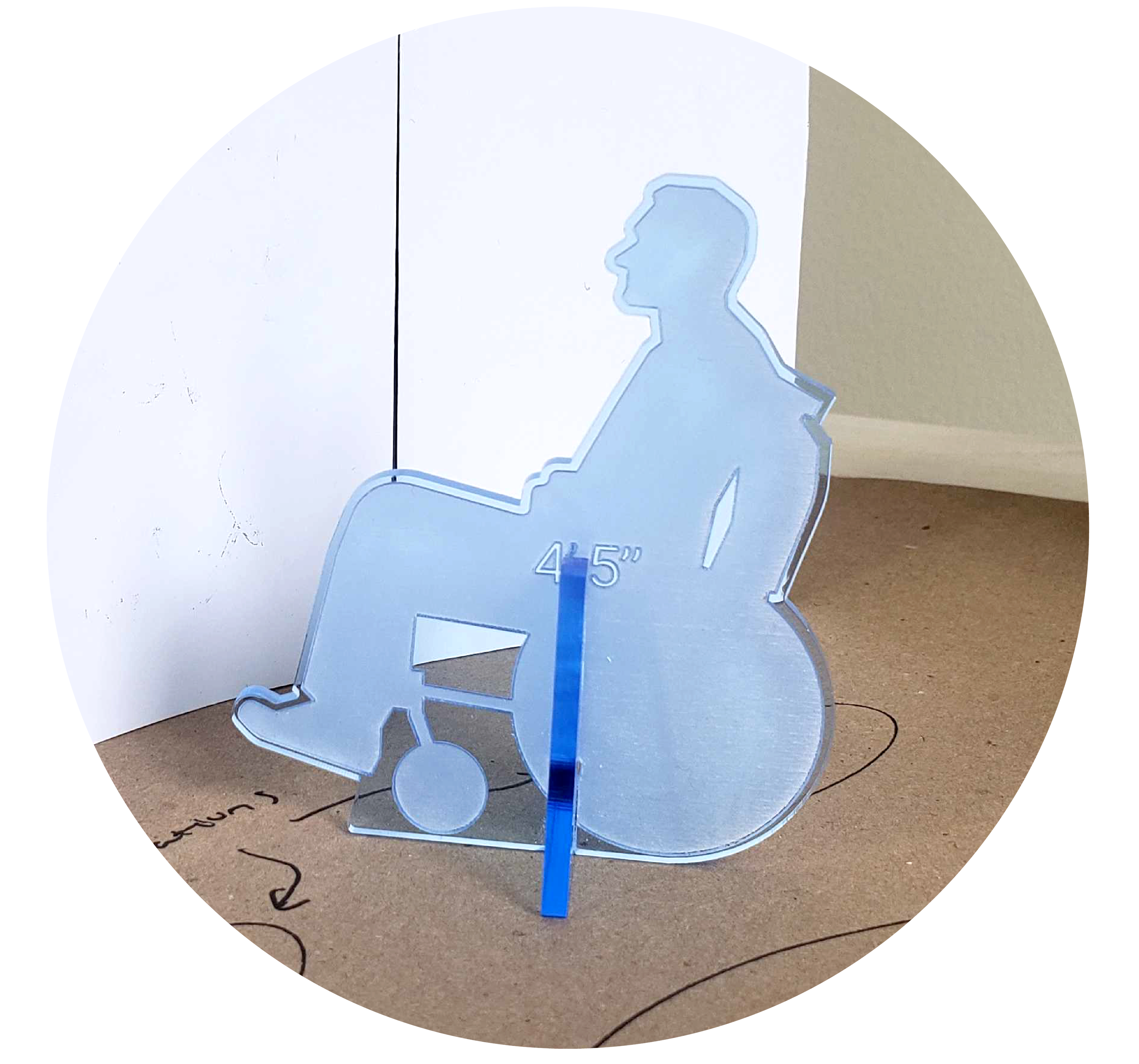 Scaled figures
Scaled figures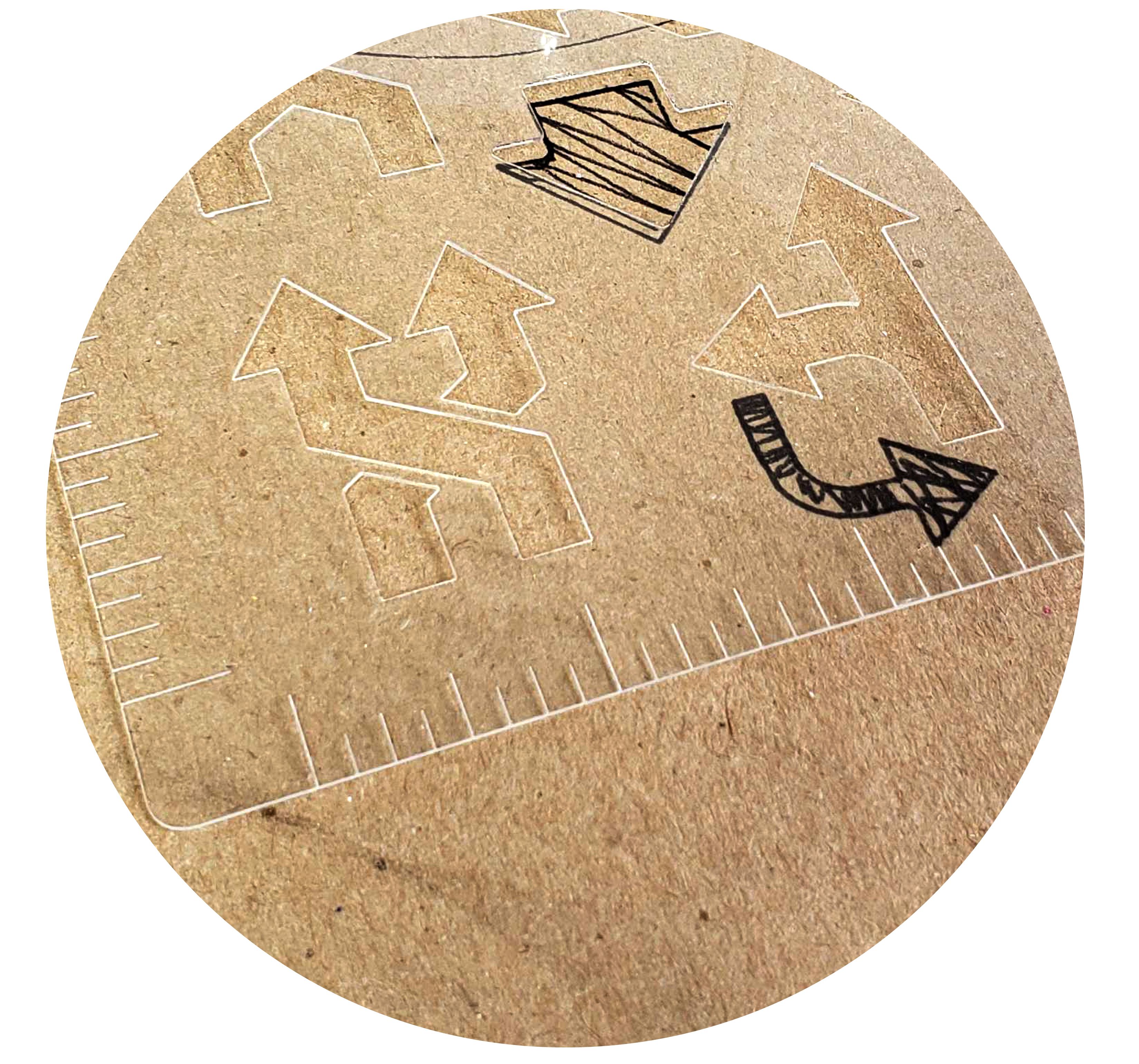 UX way-finding drawing templates
UX way-finding drawing templates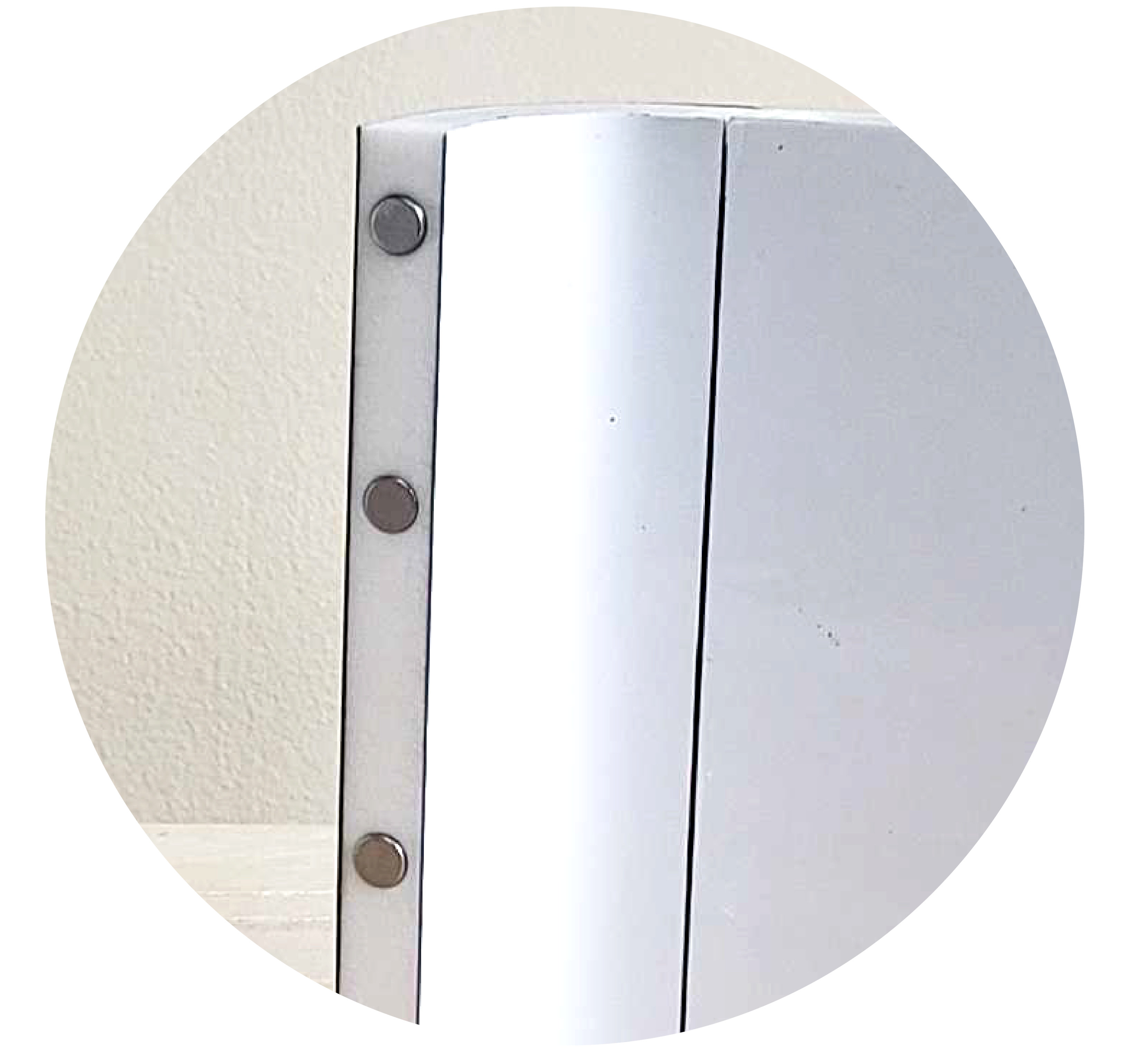 Magnetic connections
Magnetic connectionsPROTOTYPING + INTERVIEWS
User Feedback
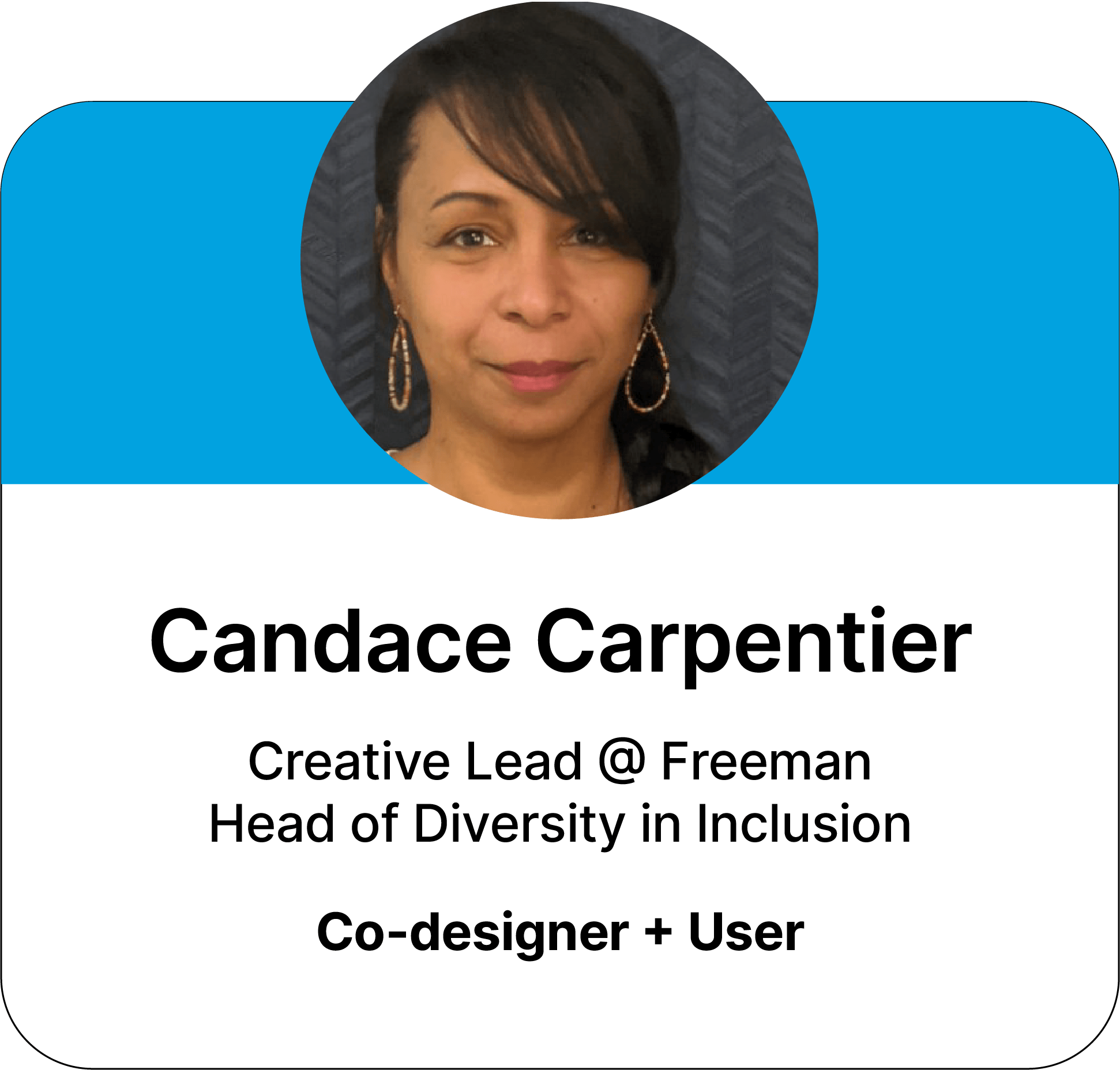
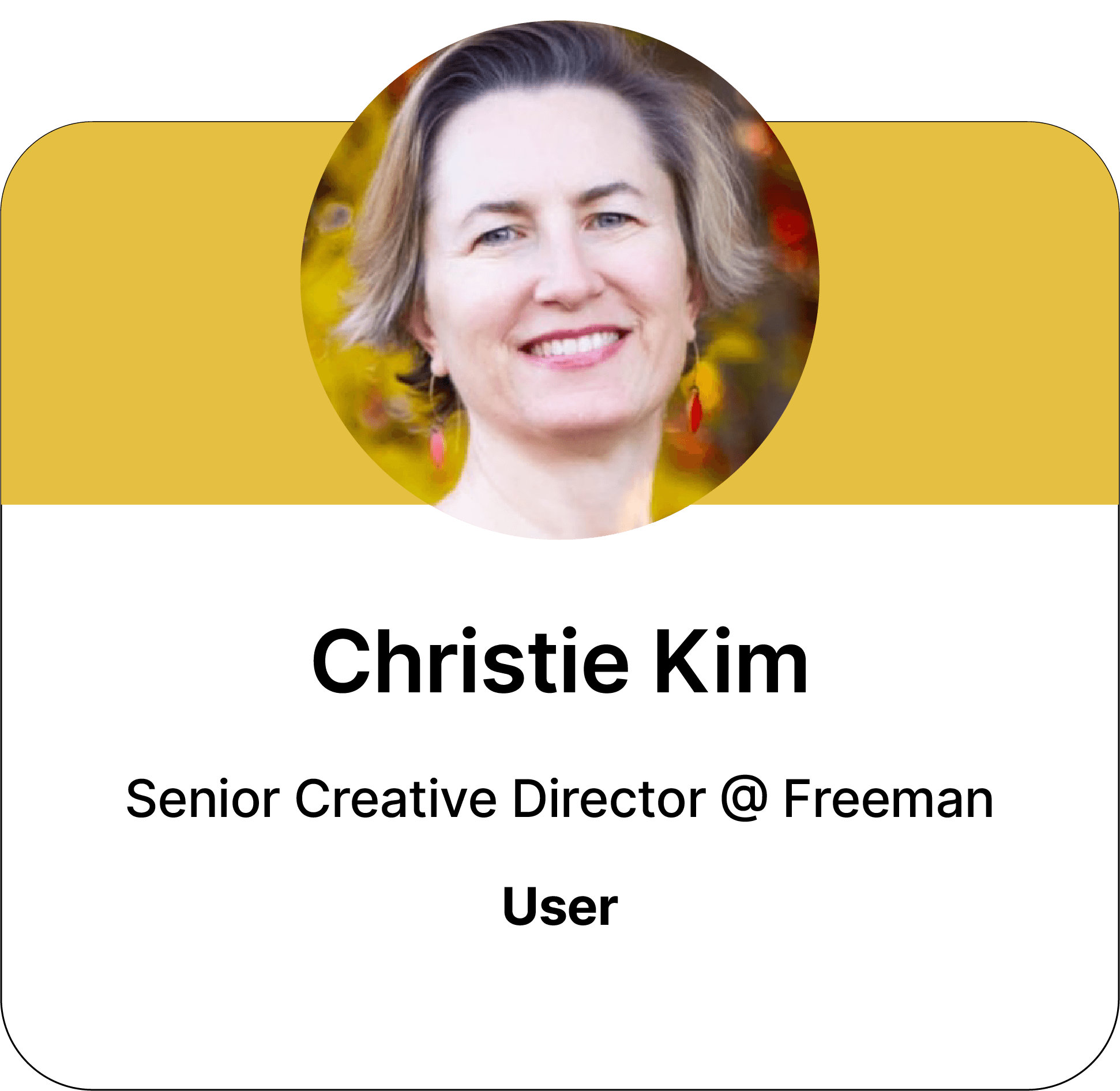
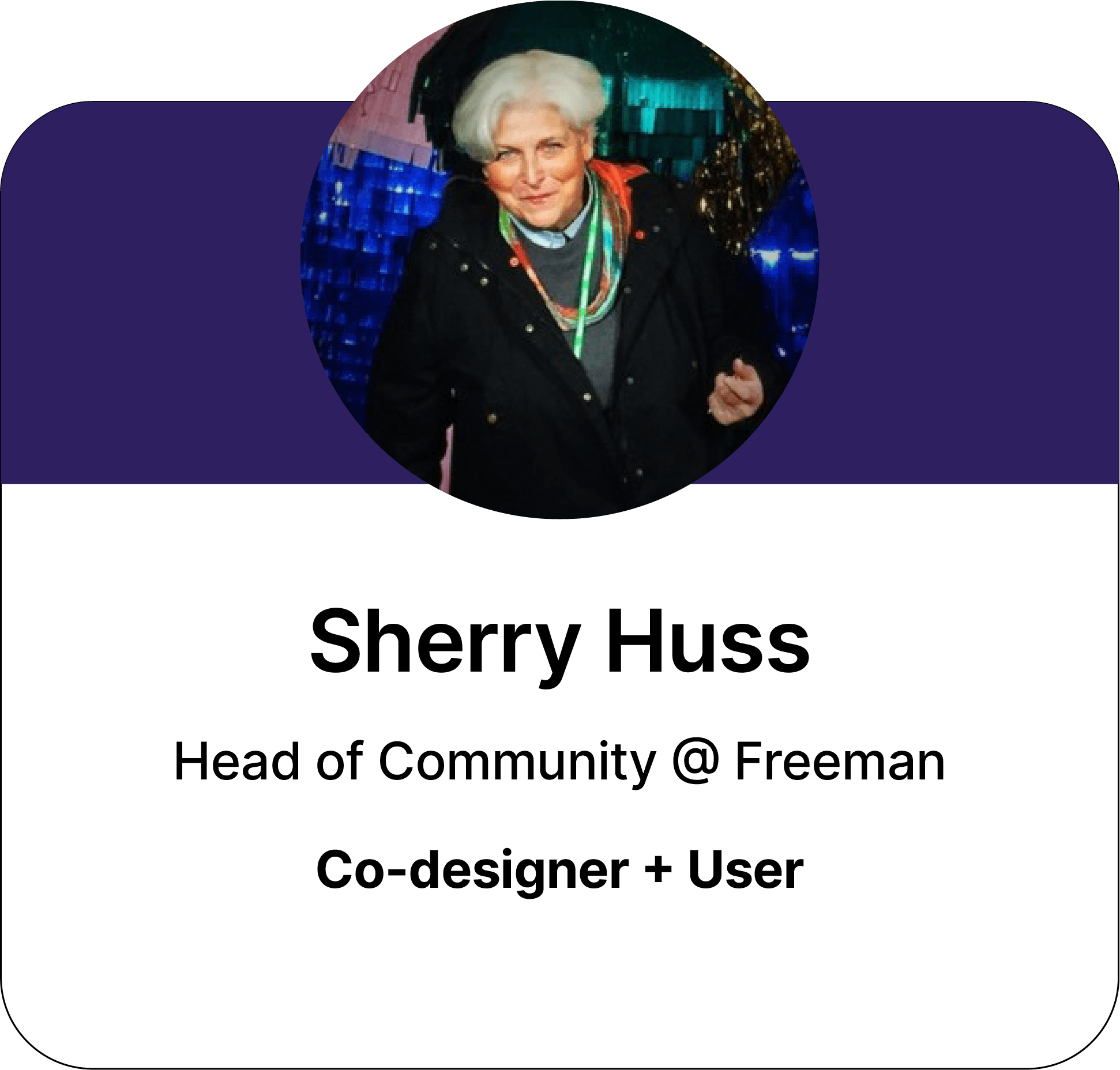
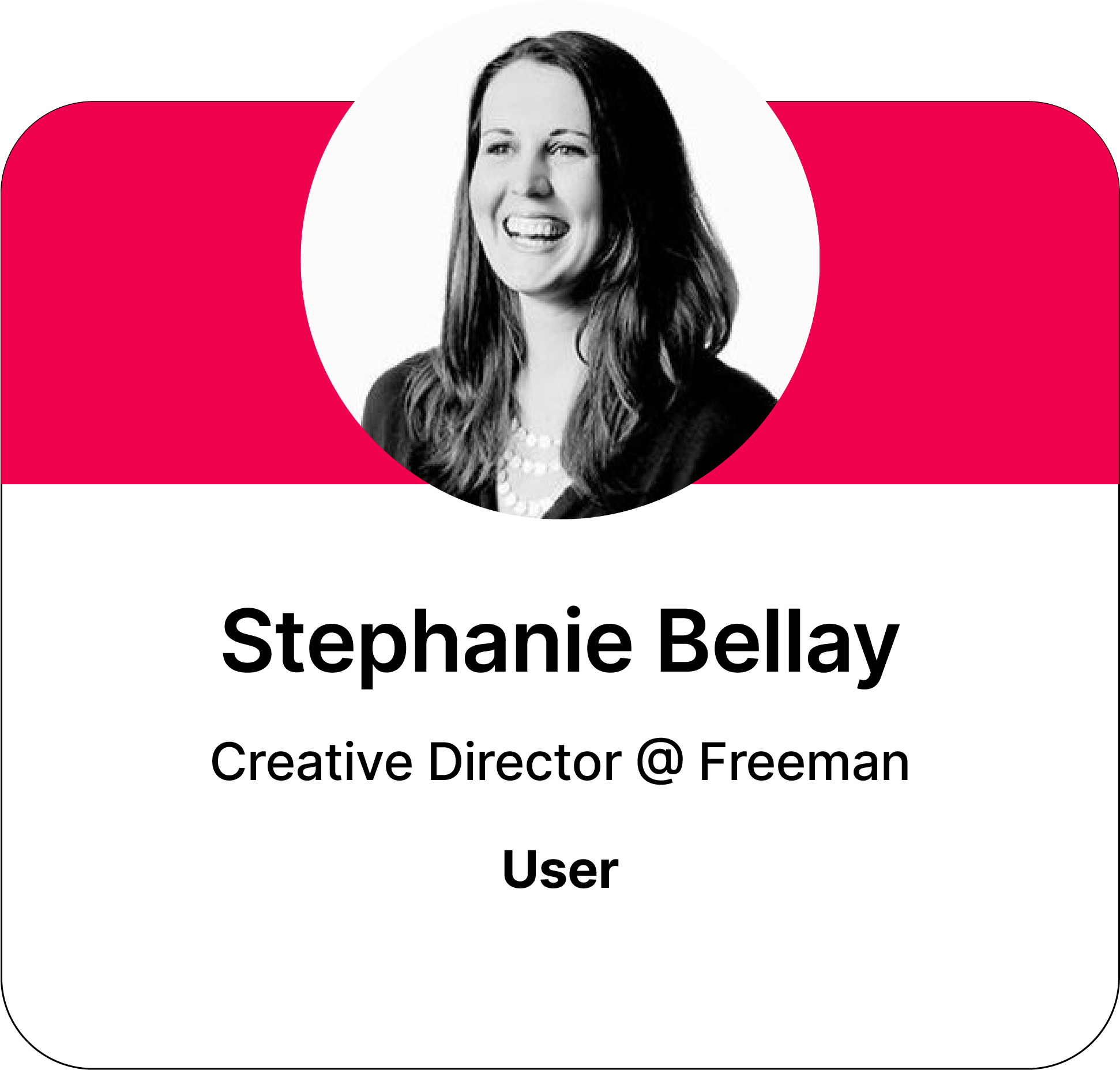
︎ Dimensions
“I travel a lot, and something like this would need to be easily fit in my suitcase so I can bring it to our clients.”
-User testing participant 4
︎ Kit as a system
“More pieces the better.”
-User testing participant 2
Findings ︎︎︎
The next iteration should include more pieces that offer further customization and opportunities for physical prototyping.
“I travel a lot, and something like this would need to be easily fit in my suitcase so I can bring it to our clients.”
-User testing participant 4
︎ Kit as a system
“More pieces the better.”
-User testing participant 2
Findings ︎︎︎
The next iteration should include more pieces that offer further customization and opportunities for physical prototyping.
︎ Defined Purpose
“This kit could exist in many areas in the offices. It would be helpful if there were different kits for different purposes to give it more direction.”
-User testing participant 1
︎ Defined Purpose
“We could use this for onboarding or for others who speak with clients to understand the design team’s ideas.”
-User testing participant 2
Findings ︎︎︎
Create a more robust kit that targets a specific audience group with differentiating goals. This includes onboarding, outreach, and tradeshow design within the company.
“This kit could exist in many areas in the offices. It would be helpful if there were different kits for different purposes to give it more direction.”
-User testing participant 1
︎ Defined Purpose
“We could use this for onboarding or for others who speak with clients to understand the design team’s ideas.”
-User testing participant 2
Findings ︎︎︎
Create a more robust kit that targets a specific audience group with differentiating goals. This includes onboarding, outreach, and tradeshow design within the company.
︎ Options
“Each piece of the event collection needs to be represented so that a person is reminded of what we have.”
-User testing participant 1
Findings ︎︎︎
The next iteration should include a naming format that is identifiable to fabricators.
“Each piece of the event collection needs to be represented so that a person is reminded of what we have.”
-User testing participant 1
Findings ︎︎︎
The next iteration should include a naming format that is identifiable to fabricators.
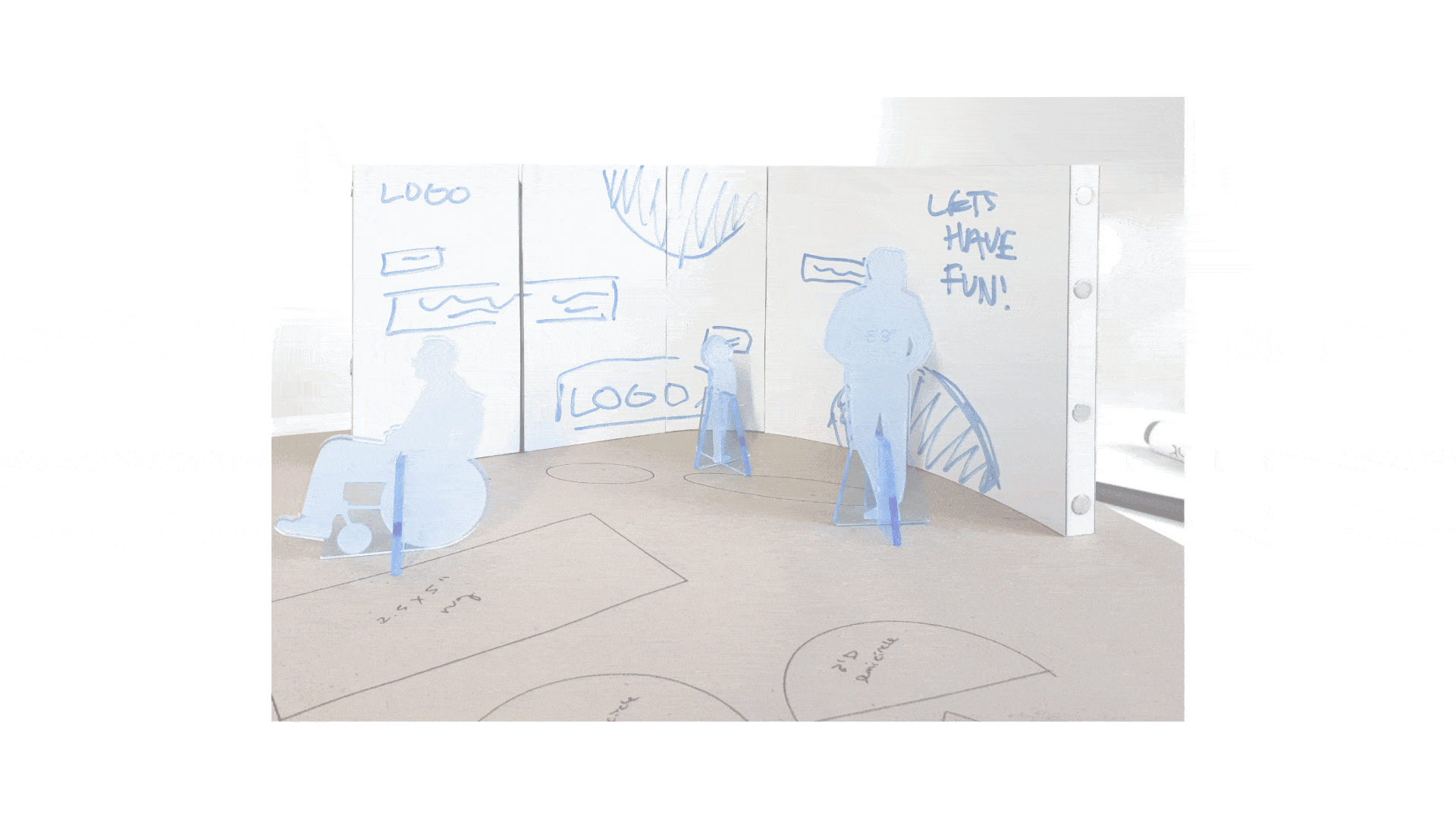
PROTOTYPING
Prototype #2: Connection Refinement




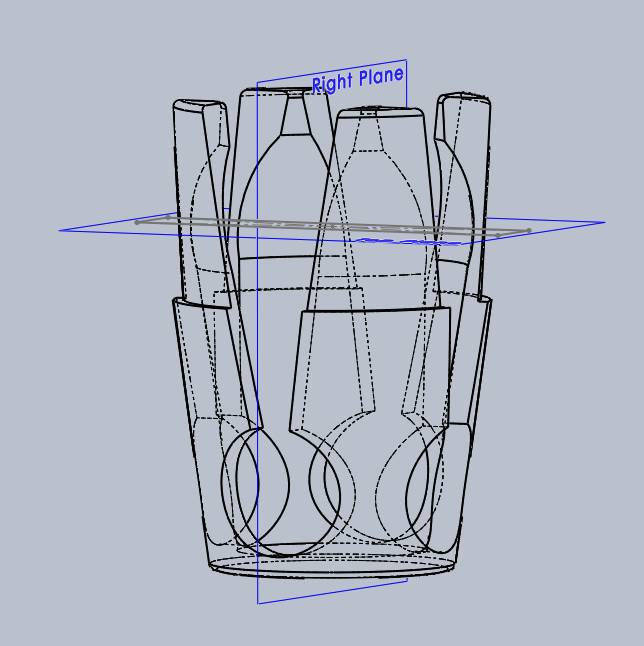
Magnet locking mechanism
︎︎︎Mechanical connection
︎︎︎Allows for free rotation for spherical magnet
︎︎︎Single 3D printed object
(C) Workshop development
Tasks
︎ Collaborate with designer Candace Carpentier, and her work with Diversity in Design focuses on introducing careers in design to BIPOC high school students to bring new perspectives to the design space.
︎ Develop three booklets with outlined exercises to tackle the core needs of the audience
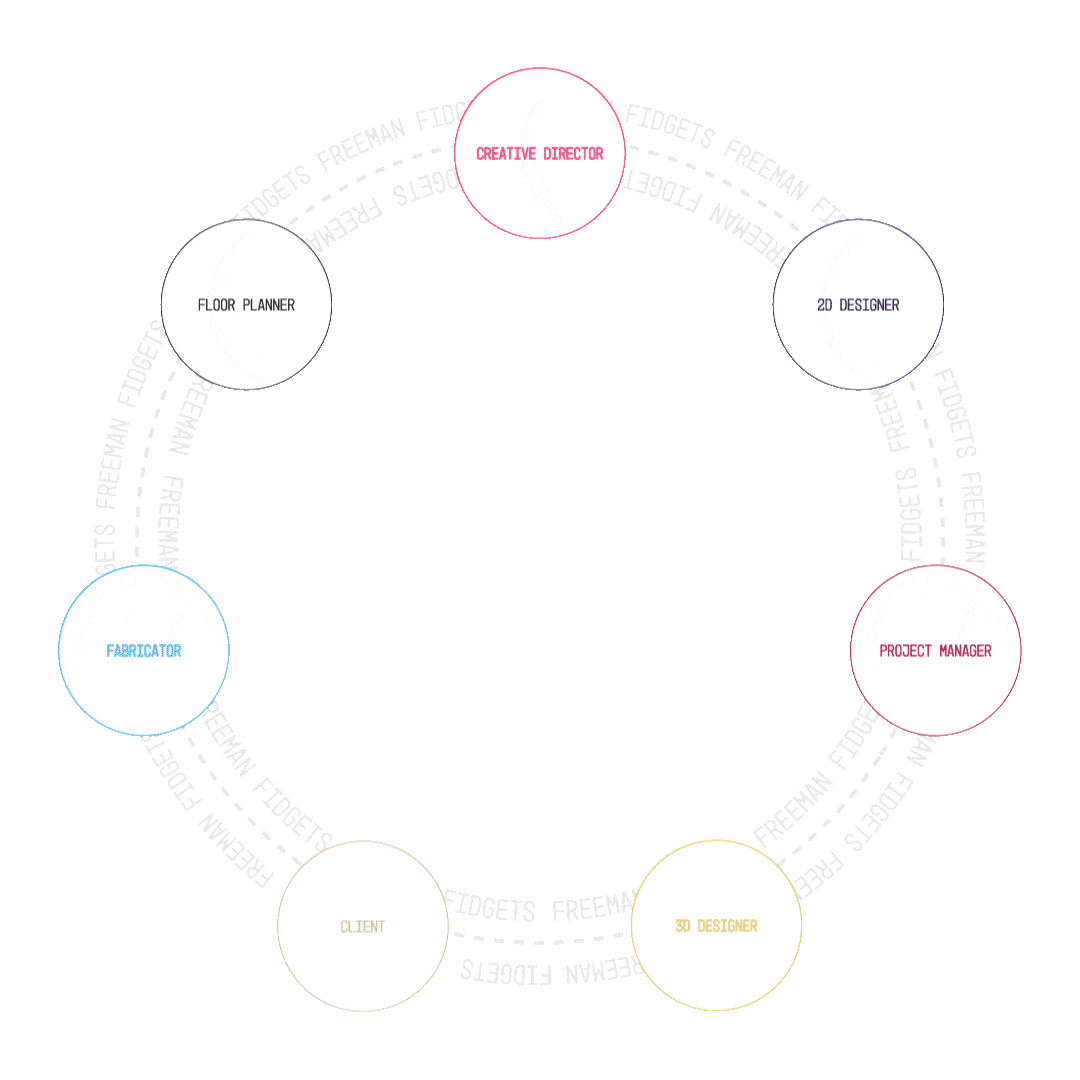
Tools used: Solidworks, Adobe Illustrator, Adobe After Effects, Adobe Indesign, Adobe Photoshop, physical prototyping (3D printing, laser cutting, model making)
